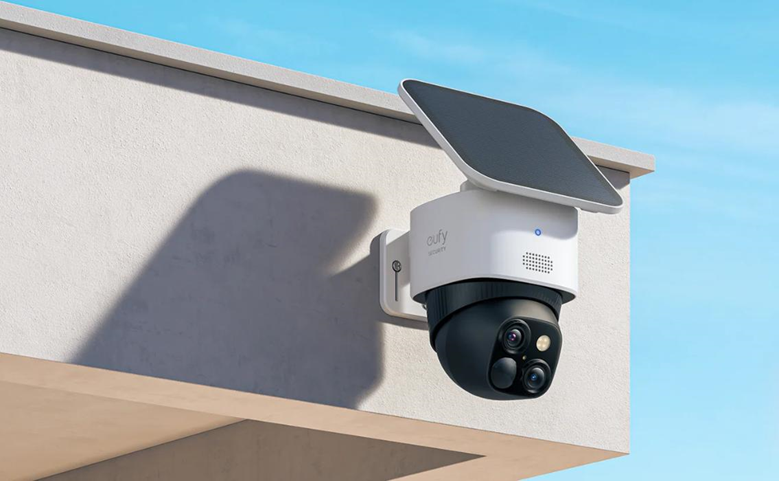Choosing the right security camera involves more than just picking the first model you find. Understanding the differences between PTZ (Pan-Tilt-Zoom) and fixed cameras can significantly influence the effectiveness of your security setup. PTZ cameras offer dynamic flexibility by allowing operators to pan, tilt, and zoom, covering larger areas with fewer devices. Fixed cameras, on the other hand, provide a constant view of a particular area. This article explores why PTZ cameras often outperform their fixed counterparts, offering better coverage and enhanced features, especially in extensive spaces and complex scenarios.

What Is a PTZ Camera and How Does It Work
PTZ cameras, short for Pan-Tilt-Zoom cameras, are advanced surveillance tools that move horizontally (pan), vertically (tilt), and adjust their focal length (zoom). These cameras are equipped with motors or servos that facilitate movement, allowing them to cover large areas and zoom in for detailed observation. Operators can control these features remotely, often through a control panel or software interface. The camera’s ability to zoom helps capture high-quality details at varying distances, making it suitable for monitoring vast spaces. PTZ cameras often come with automated features like preset patrol paths and motion tracking, enhancing security coverage with minimal manual intervention.
Major Advantages of PTZ Over Fixed Cameras
Wide Area Coverage with Fewer Cameras
PTZ cameras are ideal for monitoring large spaces with fewer units. Their ability to move and adjust angles means one PTZ camera can cover what would otherwise require multiple fixed cameras. This flexibility reduces equipment costs and installation complexity. By sweeping across wide areas and focusing in on specific sections when needed, PTZ cameras ensure comprehensive surveillance coverage. They can streamline operations, as fewer cameras need monitoring and maintenance, freeing up resources for other critical tasks.
Intelligent Tracking & Auto-Patrol Features
Modern PTZ cameras often include intelligent tracking and auto-patrol features, which automatically follow moving objects or cycle through pre-defined positions. This automation ensures no suspicious activity is missed and reduces the need for constant manual camera operation. Intelligent tracking uses advanced algorithms to follow moving objects within the camera’s range, adjusting the pan, tilt, and zoom functions seamlessly. Auto-patrol can cover multiple predetermined areas, providing regular oversight of critical zones with programmed efficiency.

Optical Zoom for Clear Detail at Distance
One of the standout features of PTZ cameras is their optical zoom capability. Unlike digital zoom, which can pixelate images, optical zoom adjusts the lens to bring distant objects into clear focus without sacrificing image quality. This function is crucial for identifying people, vehicles, or incidents from afar, providing vital details for security purposes. PTZ cameras’ zoom capabilities enhance surveillance in sprawling environments, ensuring real-time clarity in areas where fixed cameras may fall short.
Common use cases for PTZ cameras
Public spaces: parking lots, plazas, campuses
PTZ cameras excel in public spaces where comprehensive monitoring is essential. In parking lots, they can track vehicle movements and zoom in for license plate recognition. In plazas and campuses, their wide coverage can monitor crowds, ensuring safety during events or daily activities. With their ability to move and zoom, PTZ cameras provide focused surveillance on hotspots or respond to incidents as they occur, effectively safeguarding public areas with minimal infrastructure.
Commercial settings: warehouses, retail store fronts
In commercial settings, PTZ cameras offer significant advantages for surveillance coverage. Warehouses benefit from PTZ cameras by monitoring large storage areas, tracking shipments, and overseeing loading docks. Retail store fronts use these cameras to deter theft by focusing on suspicious activities and providing clear images for evidence. Their ability to cover large zones with real-time adjustments makes PTZ cameras invaluable for security operations in the commercial sector, blending technology with proactive security measures.
Remote monitoring: live events, traffic zones
PTZ cameras are perfect for remote monitoring environments like live events and traffic zones, where continuous coverage and flexibility are paramount. At live events, they capture broad scenes and zoom in on key moments, providing detailed surveillance footage. In traffic zones, PTZ cameras monitor traffic flow, identify congestion, and record violations. Their dynamic movement abilities enable efficient monitoring of complex environments, providing actionable insights and enhancing control operations.
When Fixed Cameras Still Make Sense
Fixed cameras retain a crucial role despite the advantages of PTZ models. They are cost-effective and perfect for situations where constant monitoring of a specific area is needed without the need for movement. Fixed cameras are ideal for entry points, hallways, and confined areas where comprehensive coverage is less of a priority, and enduring surveillance is required. Their simplicity makes them reliable for locations where consistent monitoring of a single scene is essential, providing set-and-forget efficiency that complements active surveillance areas.
Smart Hybrid Systems: Best of Both Worlds
Combining PTZ and fixed cameras in a hybrid system offers enhanced security advantages. A hybrid system utilizes fixed cameras to maintain steady surveillance over high-risk areas while incorporating PTZ units to scan larger regions or respond dynamically to incidents. This setup maximizes coverage, leveraging the benefits of both camera types. By integrating both, users harness the detailed, static monitoring of fixed cameras and the broad, adaptive oversight of PTZ units, creating a comprehensive, cost-effective security solution that adapts to varying needs.
Conclusion
When considering your security needs, understanding the strengths of PTZ cameras can help shape effective surveillance strategies. PTZ units offer extensive area coverage, advanced tracking, and superior zoom capabilities, making them a smart choice for dynamic environments. While fixed cameras still hold importance for constant monitoring in limited spaces, a blend of both provides unmatched coverage. Selecting the right camera type or combination ensures a tactical advantage in maintaining security, enhancing your ability to respond swiftly to various situations, and ensuring safety across diverse environments.
